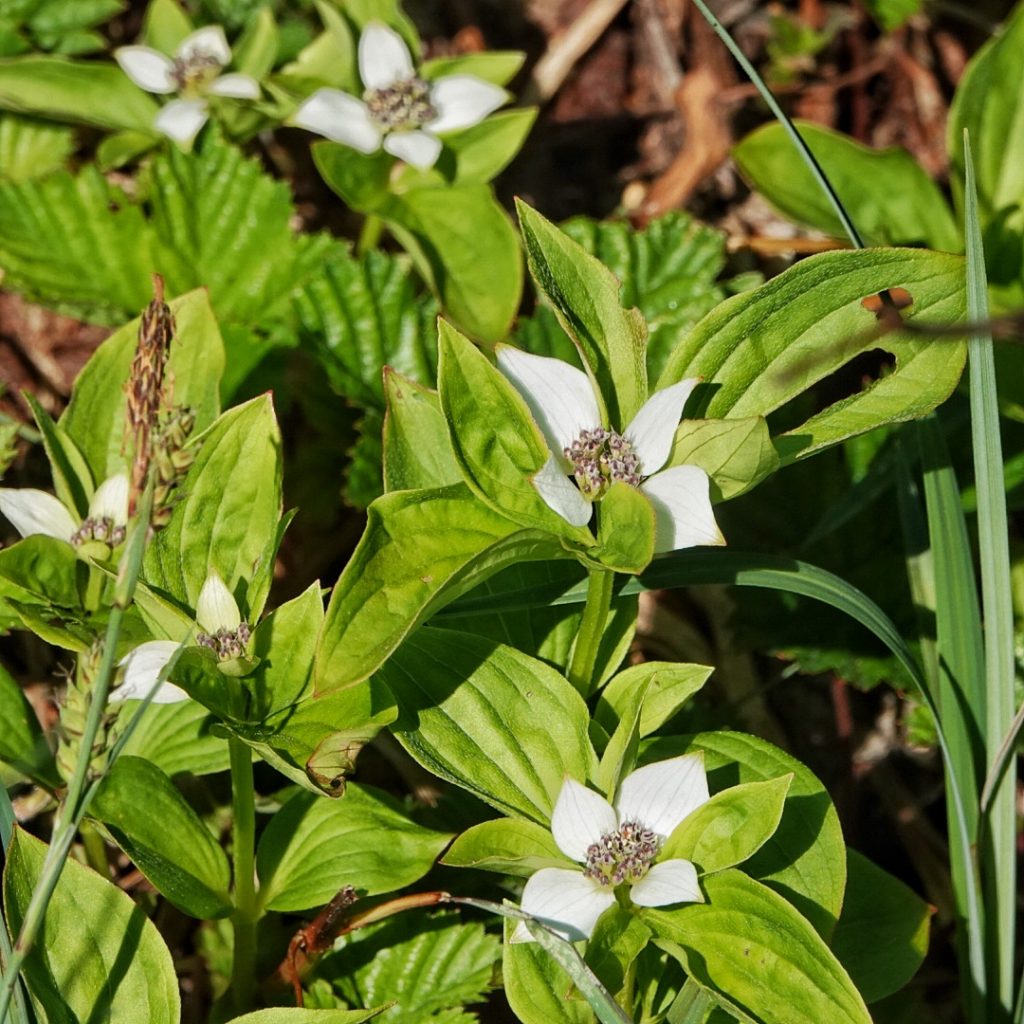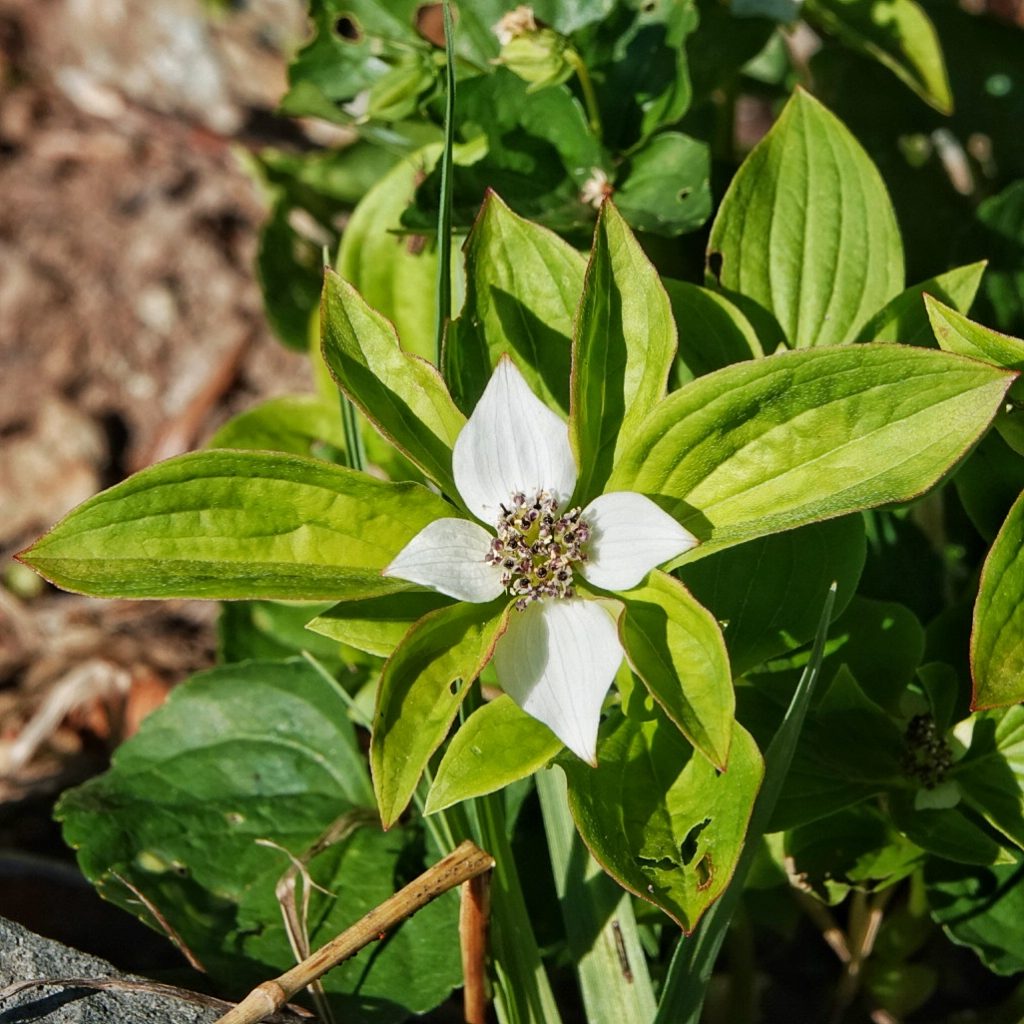
This member of the family Cornaceae (dogwoods) is an allotetraploid hybrid of Cornus canadensis and C. suecica. Being tetraploid it is fertile, and it has established populations far outside the range of the parent species, as evidenced by the fact that Cornus suecica doesn’t exist in our region. The parent species do however also form predominantly sterile diploid hybrids where their ranges overlap.
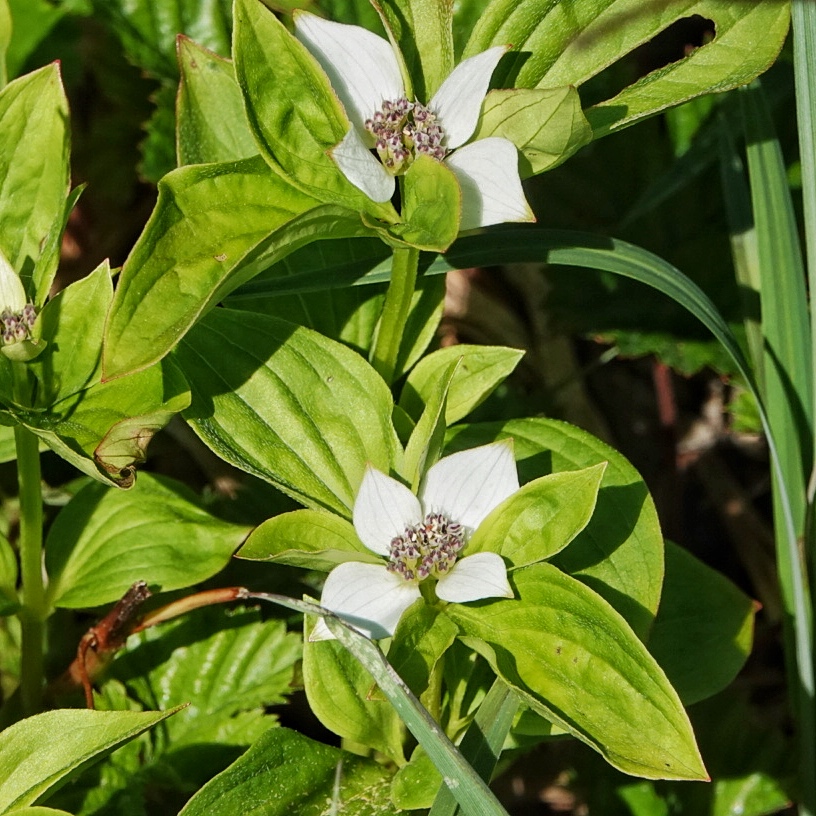
Western Bunchberry has an interesting mechanism for pollen distribution. There are tiny projections extending from a petal of a closed bud. When the pollen is ripe any insect contacting the projection will cause the flower to spring open, which expels a pollen cloud that engulfs the insect, which then carries it to the next flower.

There doesn’t seem to have been any medicinal uses ascribed to this plant, but that may be a nomenclatural issue, since the very similar Cornus canadensis (which C. unalaschkensis has frequently been misidentified as) was commonly used by indigenous peoples as a general analgesic, for colds, coughs, and fevers, as a tonic, for epilepsy and paralysis, and as a smoking mixture. However there are abundant records of northwestern tribes using Western Bunchberry berries as a food source, either raw, dried, or mixed with eulachon (smelt) grease.
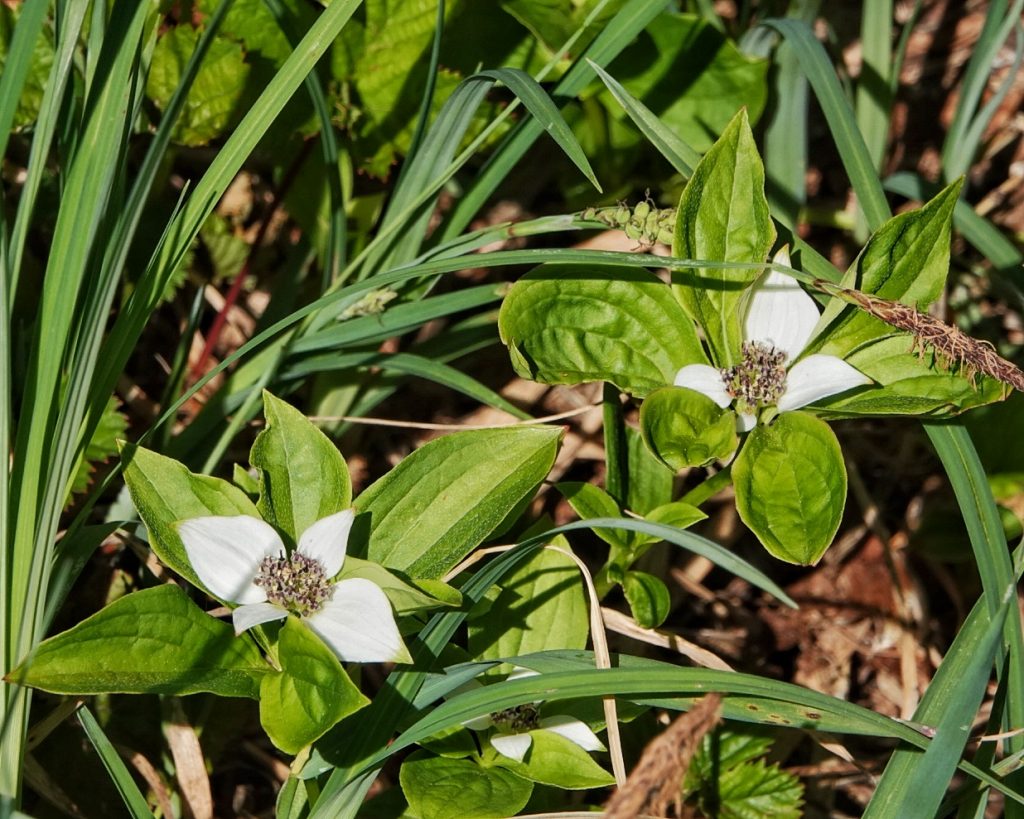
Description-Perennial; short (less than 8” tall) plant with 4-6 opposite or whorled leaves at the top of the stem, with a single flower in the middle; the botanist and bryologist David Wagner told me that one of his students pointed out that shoots with only 4 leaves do not bear flowers and flowering shoots always have 6 leaves; flower composed of 4 cream colored bracts with a central cluster of small purplish flowers; fruit is small, red berries.
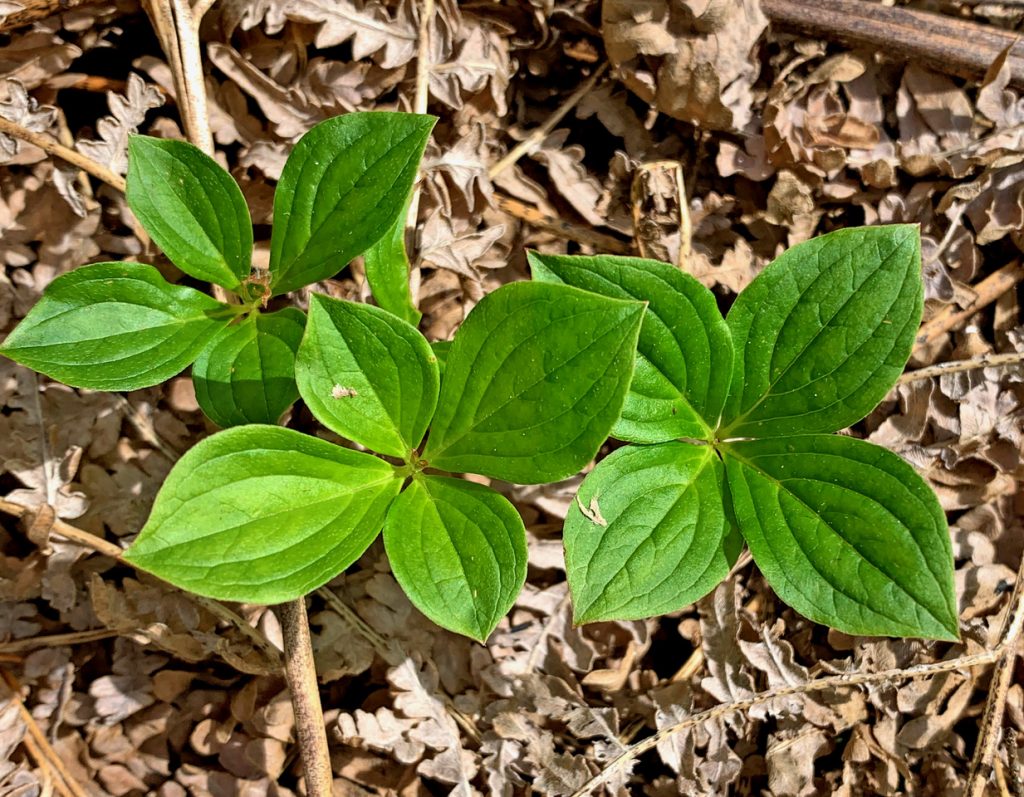
Similar species–C. canadensis has cream colored petals on its central flowers, and is only found in the northeastern part of our region, although it is common throughout northern North America.
Habitat-Moist to mesic forests and woodlands up to subalpine elevations.
Range-Northwestern North America; region wide in appropriate habitat; absent from shrub steppe and the most arid interior.
Reproductive timing-Blooms June through August; fruits ripen August to October.
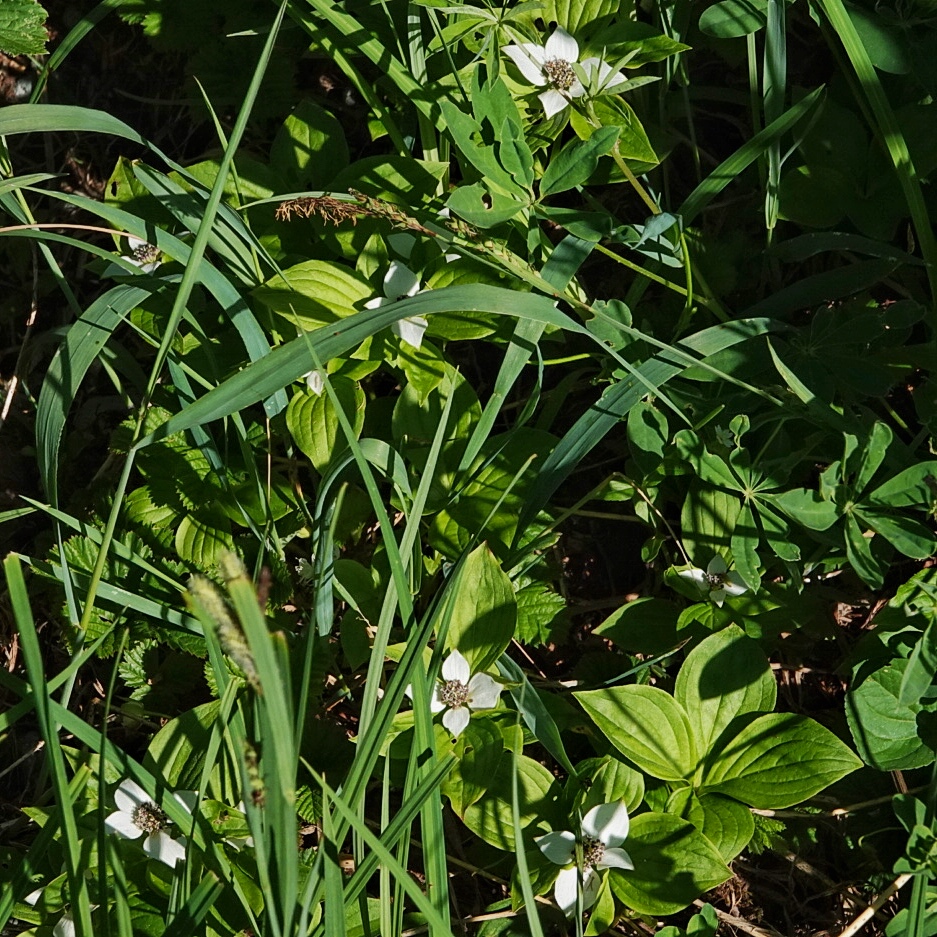
Eaten by– There are a bewildering array of butterflies, moths, leaf beetles, stink bugs, and flies whose larvae or nymphs feed on various Cornus sp., so it may be assumed that at least some of them feed on this plant, but the only species specific references I could find are that adults and larvae of the flea beetle Altica corni feed on this plant, as do the larvae of the leaf mining flies Phytomyza agromyzina; a wide diversity of members of the orders Lepidoptera, Hymenoptera, Diptera, Coleoptera, and Hemiptera are known to feed at the flowers; deer, elk, and other herbivorous mammals browse the leaves, flowers, and fruits, and many bird species also feed on the fruits.
Etymology of names–Cornus is from the Latin word for the cherry dogwood. The specific epithet unalaschkensis refers to the type specimen of this species being found near Unalaska Harbor in the Aleutian Islands of Alaska.
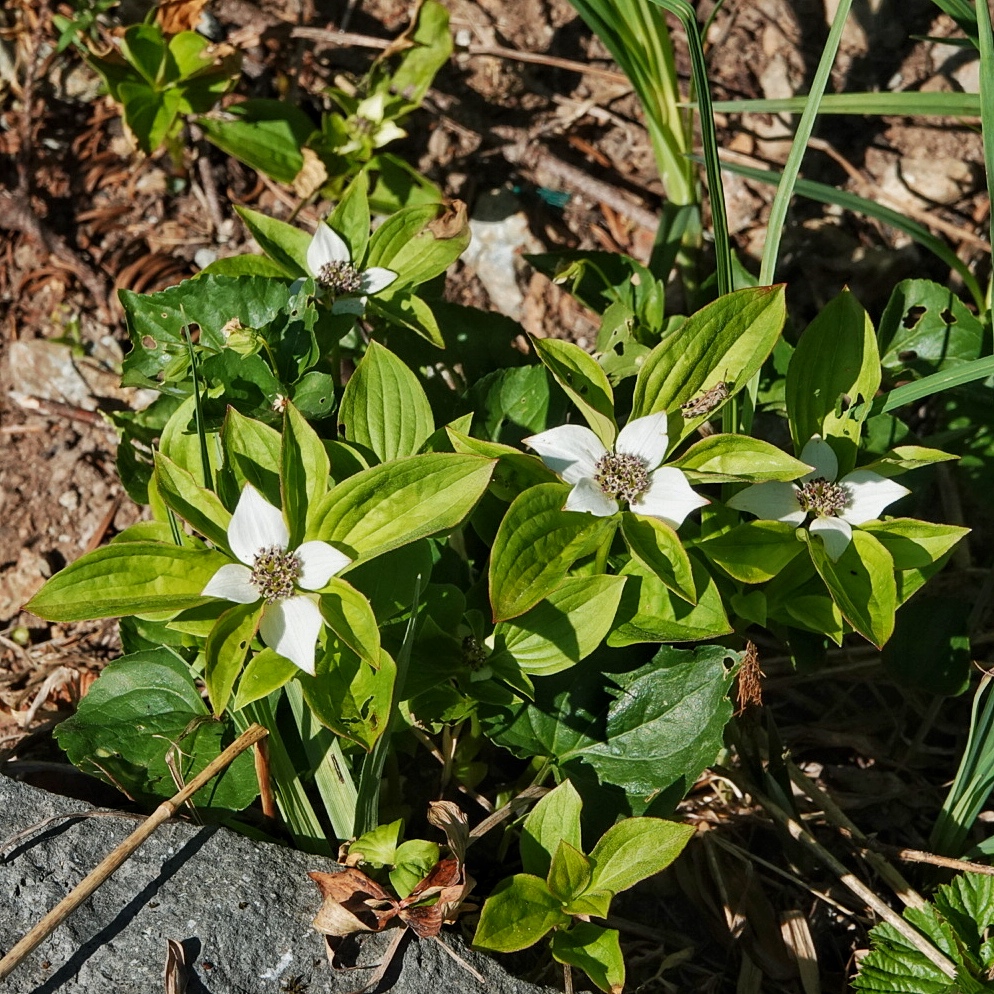
https://www.wnps.org/native-plant-directory/97-cornus-unalaschkensis
BRIT – Native American Ethnobotany Database
OregonFlora Cornus unalaschkensis
http://www.efloras.org/florataxon.aspx?flora_id=1&taxon_id=250101780
http://www.pnwplants.wsu.edu/PlantDisplay.aspx?PlantID=212
https://www.centralcoastbiodiversity.org/bunchberry-bull-cornus-spp.html
https://www.biologyonline.com/dictionary/allotetraploid
